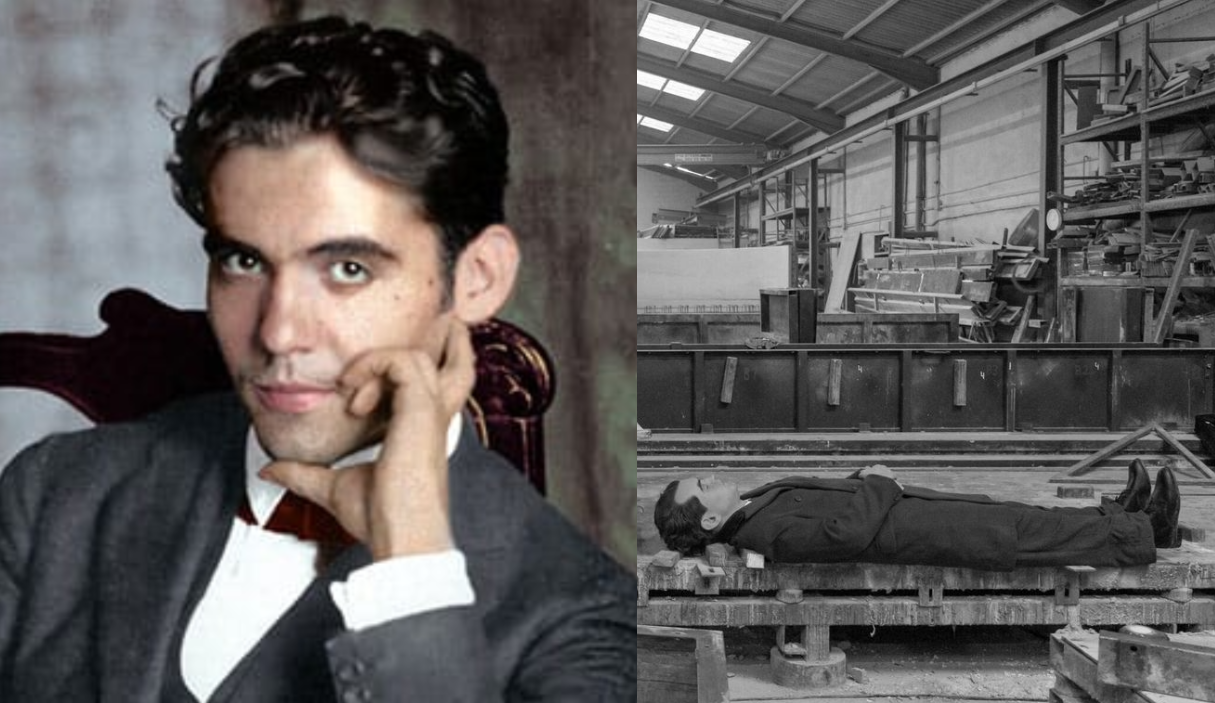The figure of Lorca girded in cement
Some 1,150 kilos of cement hide the hyperrealistic sculpture of Federico García Lorca, created by conceptual artist Eugenio MerinoThis work, which can be seen only through a small hole in the structure, is presented as an ordinary bench, present in any city. However, this ordinary bench contains deep meanings related to memory and the fight for equality.
A call to memory
The installation, titled Banco Público, will be inaugurated on September 19 in ADN Galeríaof Barcelona. Anyone can sit on this peculiar bench, which is a symbol of historical memory and the fight against hate crimes. The intervention seeks to remember the demand for a freer society as Lorca he dreamed it in life.
The duality of art and reality
Merino had already worked with the figure of Lorca previously in your projectRuina, where the poet appeared partially exposed. Now, Merino makes a stronger statement: although the figure of Lorca Although hidden, the bench is functional, creating a space that provokes reflection on our past and present, especially at a time when hate speech is increasingly common.
Towards a new type of consciousness
HeBanco Públicobrings viewers into contact with the idea of the missing. Like a floor on which we step without knowing what lies beneath, this bench allows visitors to rest on a symbolic grave. The words of Merino They emphasize that the value of this work lies in its ability to pay tribute to the more than 100,000 people who disappeared during the repression. franquista that still remain hidden.
A necessary reflection on the material
Semíramis González, curator of the intervention, says that the material of this work becomes ideology. The use of cement as a symbol is not accidental, it represents a reminder of lives that, although buried, are part of history. This proposal also addresses issues LGTBI and feminists, reflecting the lives and deaths of those who, like Lorca, were persecuted.
A body that represents much more
Víctor Fernández, expert in the life of Lorca, has collaborated with Merino, indicating that this work highlights the invisibility of the poet's figure. The way he is represented in cement invites the viewer to question what has happened to his memory, from his murder to his symbolism in the fight for social justice.
“ Banco Público ” is presented as acontramonumentothat seeks to draw attention to what lies beneath its surface. On each visit, this art not only represents Lorca, but also to a set of struggles that are still valid today.
Resonance of a past that insists on being remembered
Between the appreciation of art and history, the words of Juan Diego Botto, who invites us to discover the relationship between the work of Lorca and its political principles. With Banco Público, seeks to open a space for reflection and connection with the social struggles that endure. This art requires us to delve beyond the obvious to embrace the history that still resonates today.
“The past is never really dead. It isn’t even past.” This quote resonates with the message of Banco Público, reminding us that struggle and memory are contemplated in every corner of our history, ready to be explored by a new social conscience.

